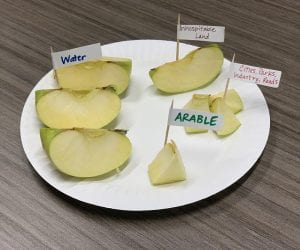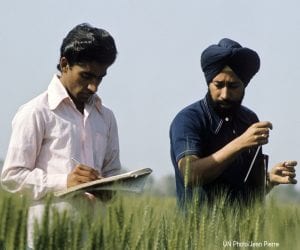For centuries, agricultural lands expanded to meet food needs. But there is a finite amount of arable land on Earth, and our wild neighbors need space to maintain vital ecosystem services for a healthy planet. With human population hitting 8 billion people this November, successfully feeding our global family, while leaving wildlands wild, becomes even more urgent.
Here we’ve graphed population alongside agricultural land to give us insights into changing agriculture and how to face the next century of food challenges.
Historic Relationship Between Population and Agricultural Land
From 1 CE until recent history, agricultural land area closely followed population changes. Up until the Industrial Revolution, most people lived in rural areas, and most food was produced close to where it was consumed. Therefore, agricultural lands in local communities increased or decreased alongside the number of people living in the community. The History Database of the Global Environment dataset (HYDE 3.21) estimates agricultural land use by using population estimates along with geographic and environmental characteristics. Before 1700 CE, population and agricultural land changed in lock step.
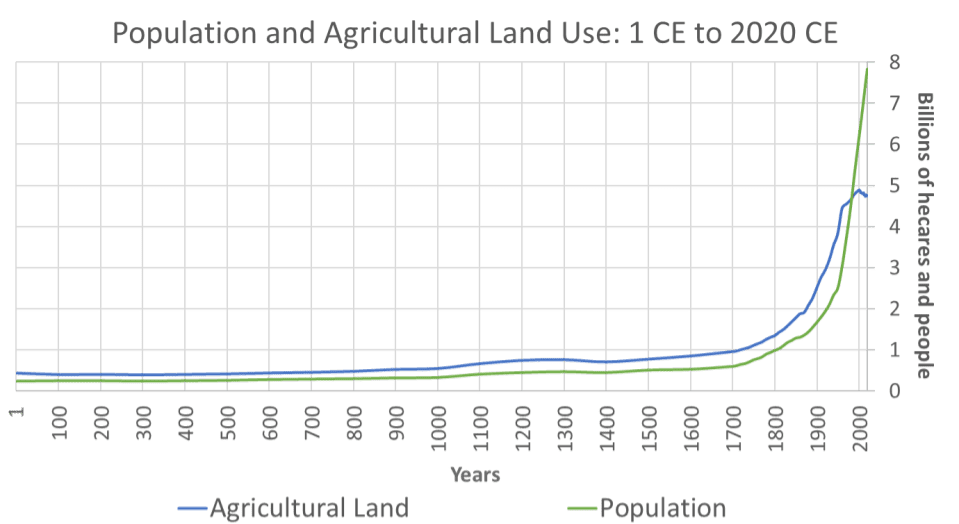
Relationship Between the Industrial Revolution and Agricultural Land
Starting in the 1700s, the Industrial Revolution changed the landscape of agriculture and fundamentally shifted our relationship to food (highlighted in yellow on the graph below). Advances in communication, transportation, and storage meant that more people had access to food from farther away. People left small agricultural communities in favor of expanding cities. In the U.S., around 2% of the population lived in urban areas prior to the Industrial Revolution. By 1900 that number grew to around 40%, and now, over 80% of all people in the U.S. live in urban areas.
As people moved away from farms and into cities, the lack of rural labor spurred innovation in agricultural technologies. Machines like the seed drill, cotton gin, and threshing machines allowed for higher productivity with fewer people. There was more food in cities, and a more consistent supply of food. Along with advances in medicine and public health, death rates plummeted and population exploded. Agricultural land continued to expand to keep pace with the increasing population, and both agricultural land and population rose alongside each other.
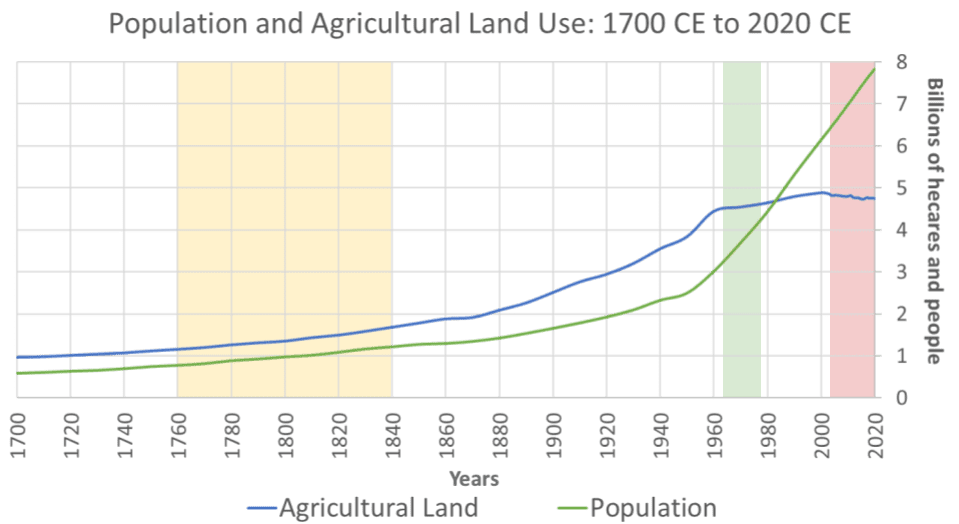
The Green Revolution – Increasing Agricultural Productivity, Slowing Amount of Needed Agricultural Land
Population and agricultural land increased in tandem from the Industrial Revolution until the Green Revolution in the 1960s (highlighted in green). At that point, our global population was around 4.4 billion and rising rapidly. Countries like Mexico and India found that they were no longer producing enough food to be self-sufficient. Science turned its focus to cultivating crop varieties with higher yields on more marginal lands. New types of wheat, corn, and rice, alongside new fertilizers, pesticides, and irrigation practices led to a massive increase in agricultural productivity without a similar increase in agricultural land. Population continued to expand, but the amount of land used for agriculture began to slow. For the first time in centuries, we saw a real decoupling of population and agricultural land, and a sharp decline in the average amount of land needed to sustain one person (as seen in green on both graphs).
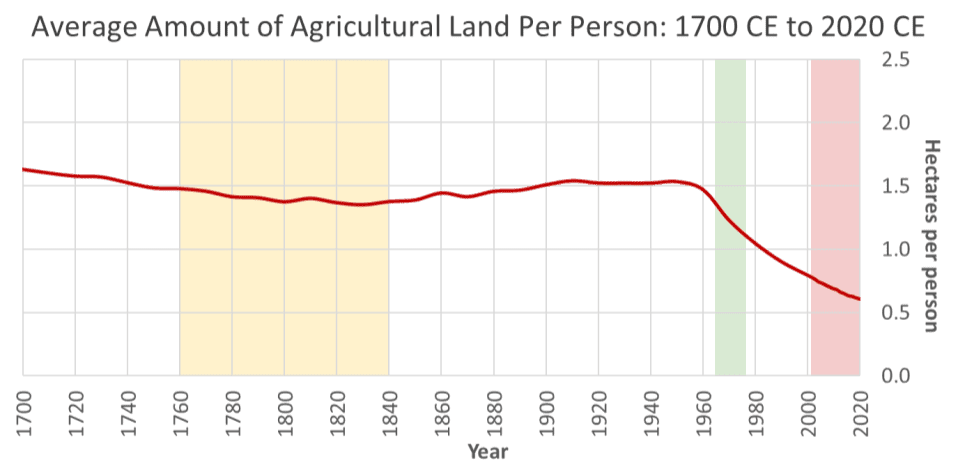
Declining Agricultural Land at the Turn of the Century
Starting around the turn of the 21st century, total agricultural land has been on the decline. (See the red highlight on the graphs.) This means that land previously used for food is reverting back to wildlands or being used for other purposes. Expanding agriculture is a huge driver of biodiversity loss and carbon emissions. Restoring these lands could be a big environmental boon.
But the loss of agricultural land isn’t always a good thing. In the U.S., a large chunk what was once farm land is now urban and suburban development, not wildlands. In the former Soviet Union, tracks of abandoned agricultural land are now degraded and unproductive. Also, not all types of agricultural land are declining. Crop land is on the rise as pasture declines. More cattle are being fed grain rather than being grazed, leading to an increasing demand for soy from places like Brazil and Argentina where deforestation and soil erosion are some of the fastest in the world.
The Future of Food for Our Global Family
Our population will continue to rise past the 8 billion milestone this November. The FAO estimates that we’ll need to increase food production by 60% by 2050 to keep pace with population. It’ll take continued innovation to support agricultural productivity and feed our growing global family.
1 Klein Goldewijk, K., Beusen, A., Doelman, J., and Stehfest, E.: Anthropogenic land use estimates for the Holocene – HYDE 3.2, Earth Syst. Sci. Data, 9, 927–953, https://doi.org/10.5194/essd-9-927-2017, 2017.



